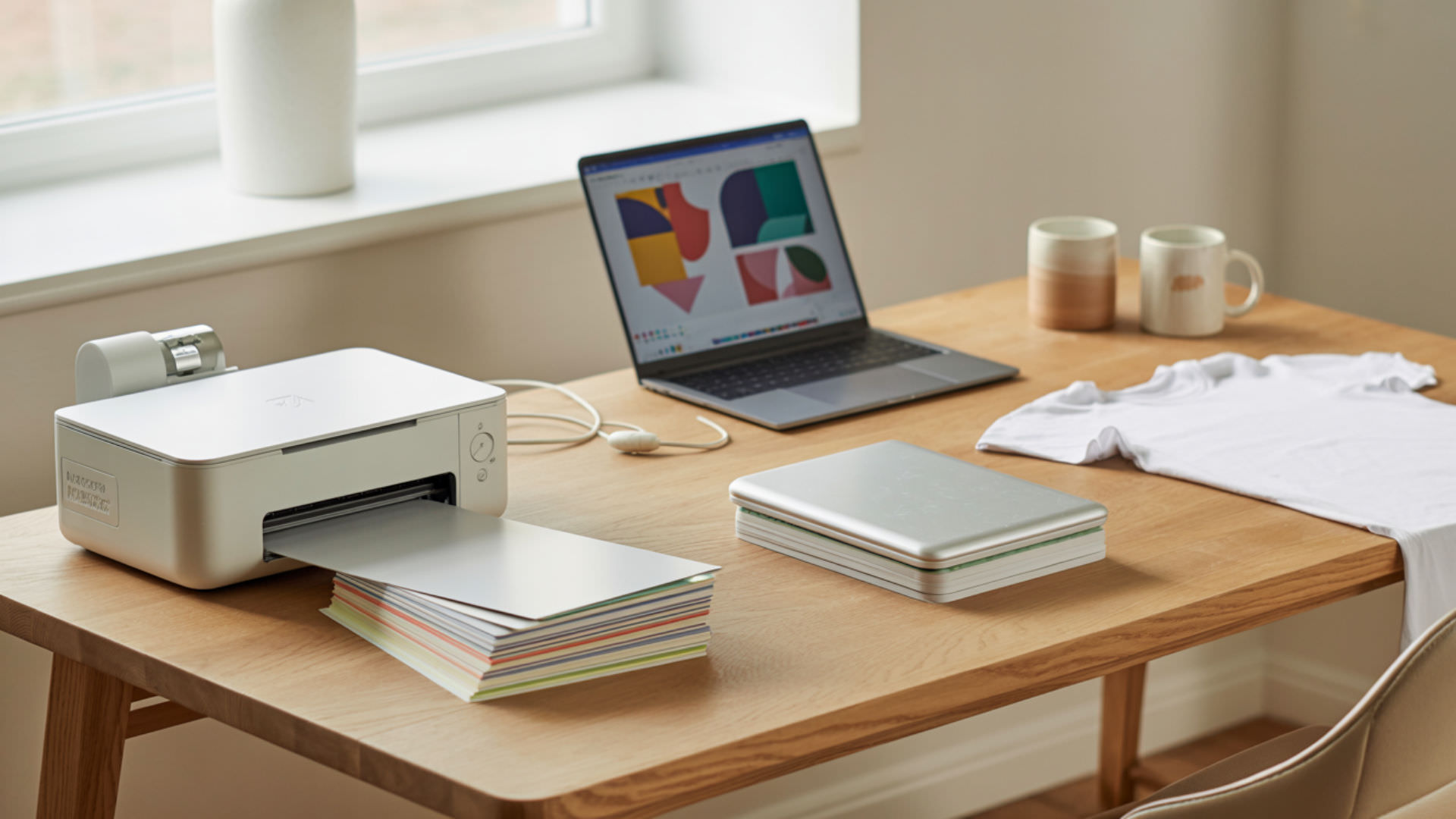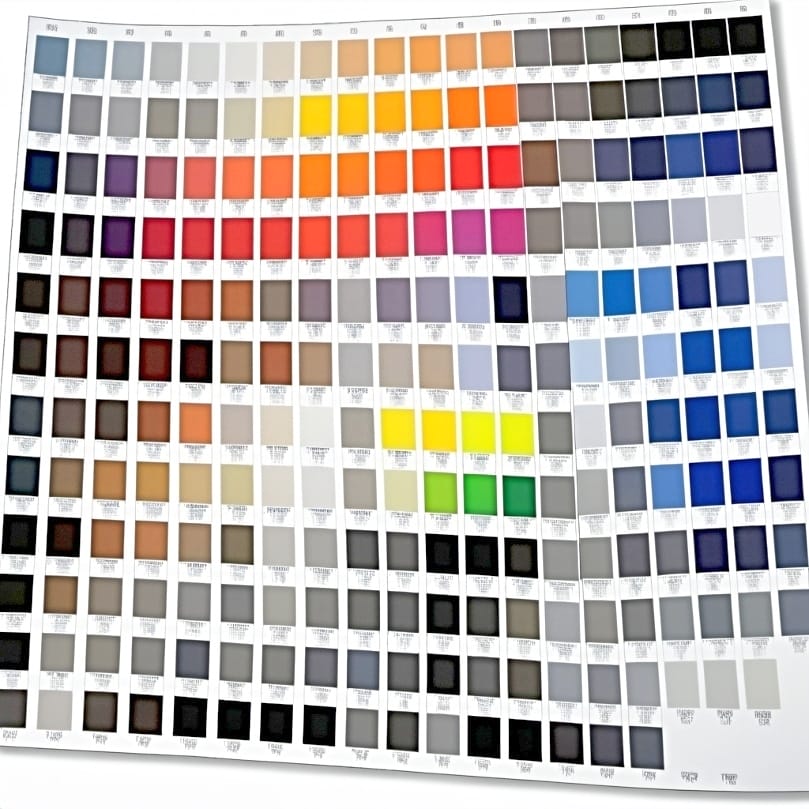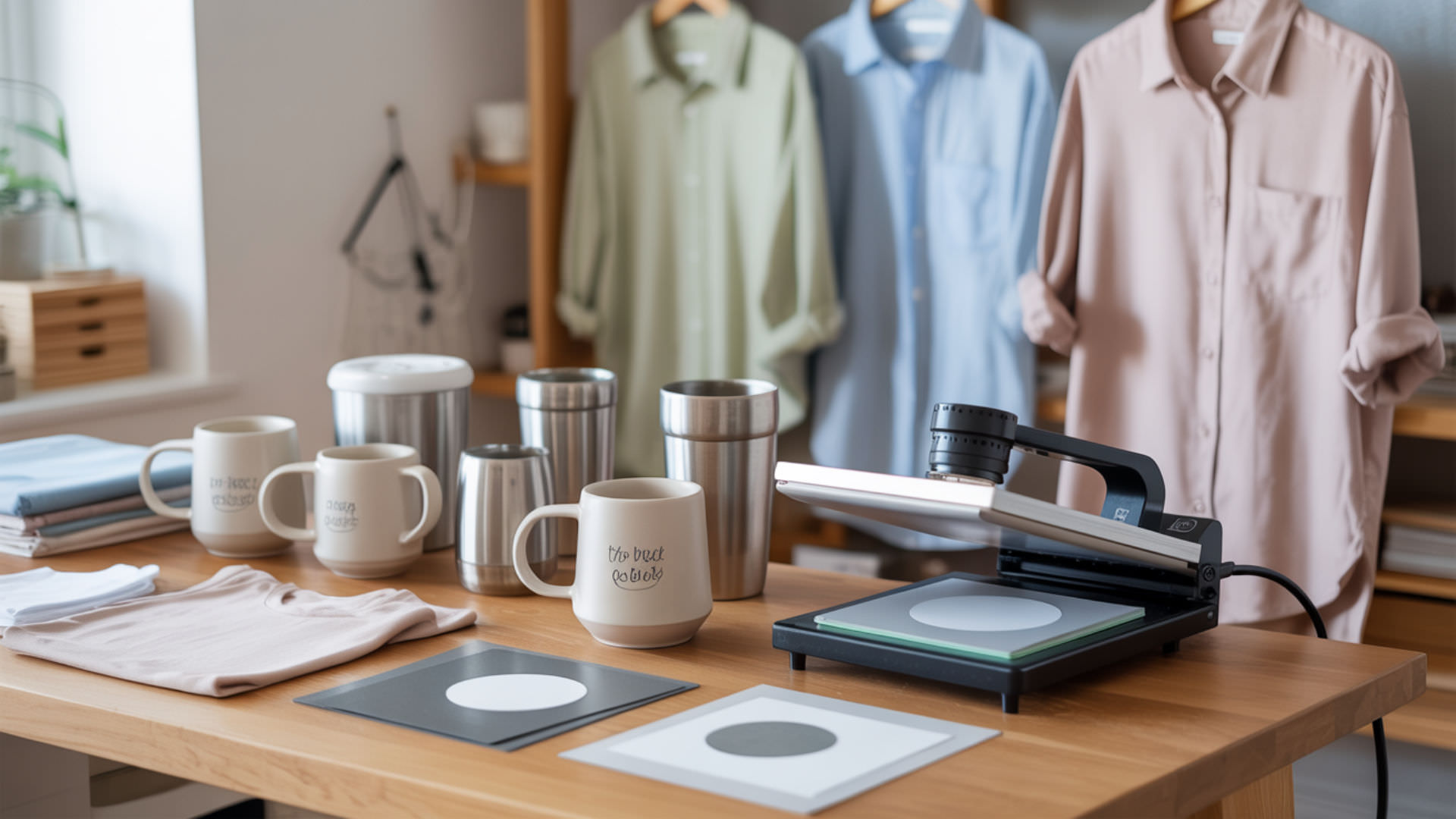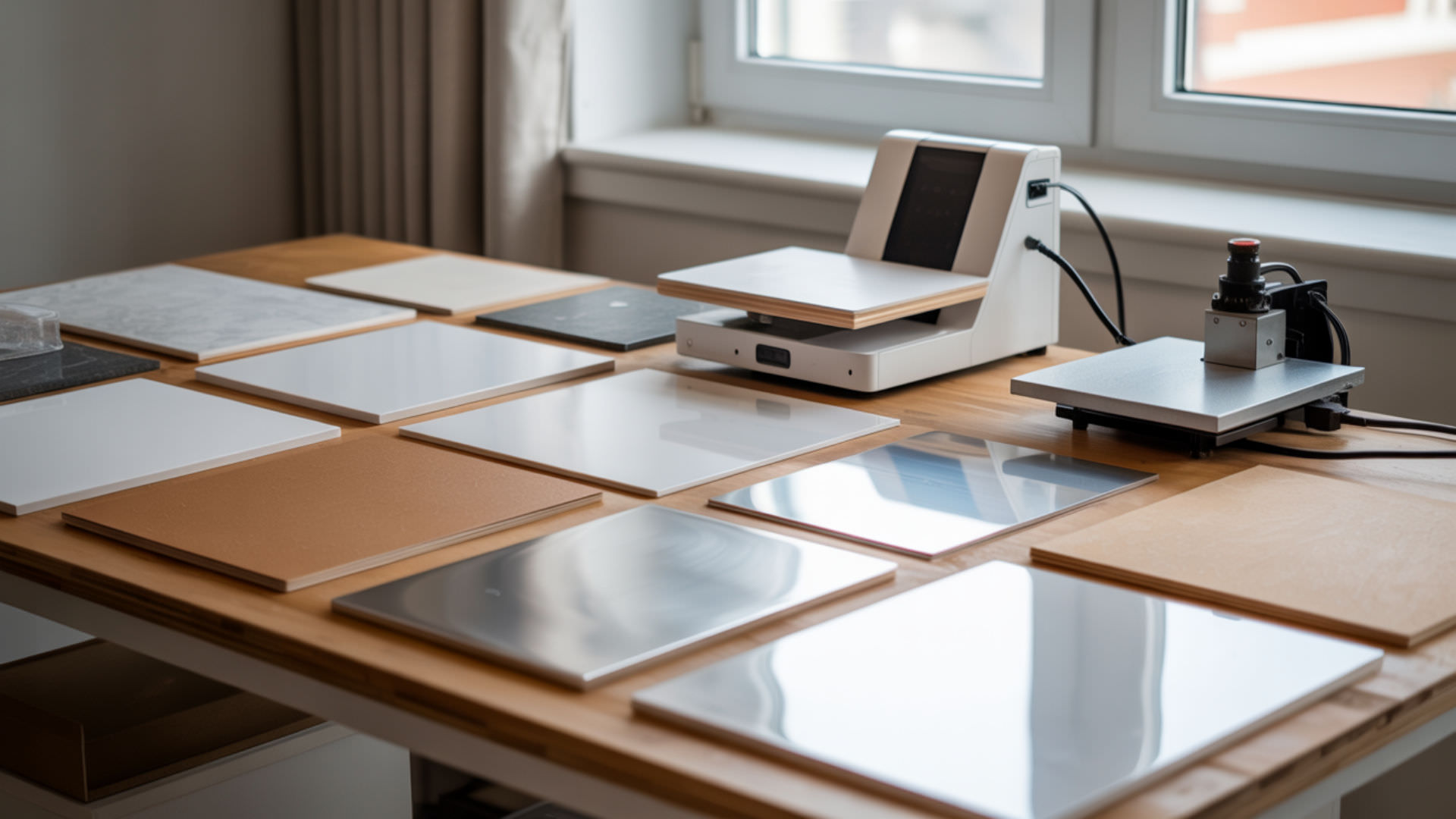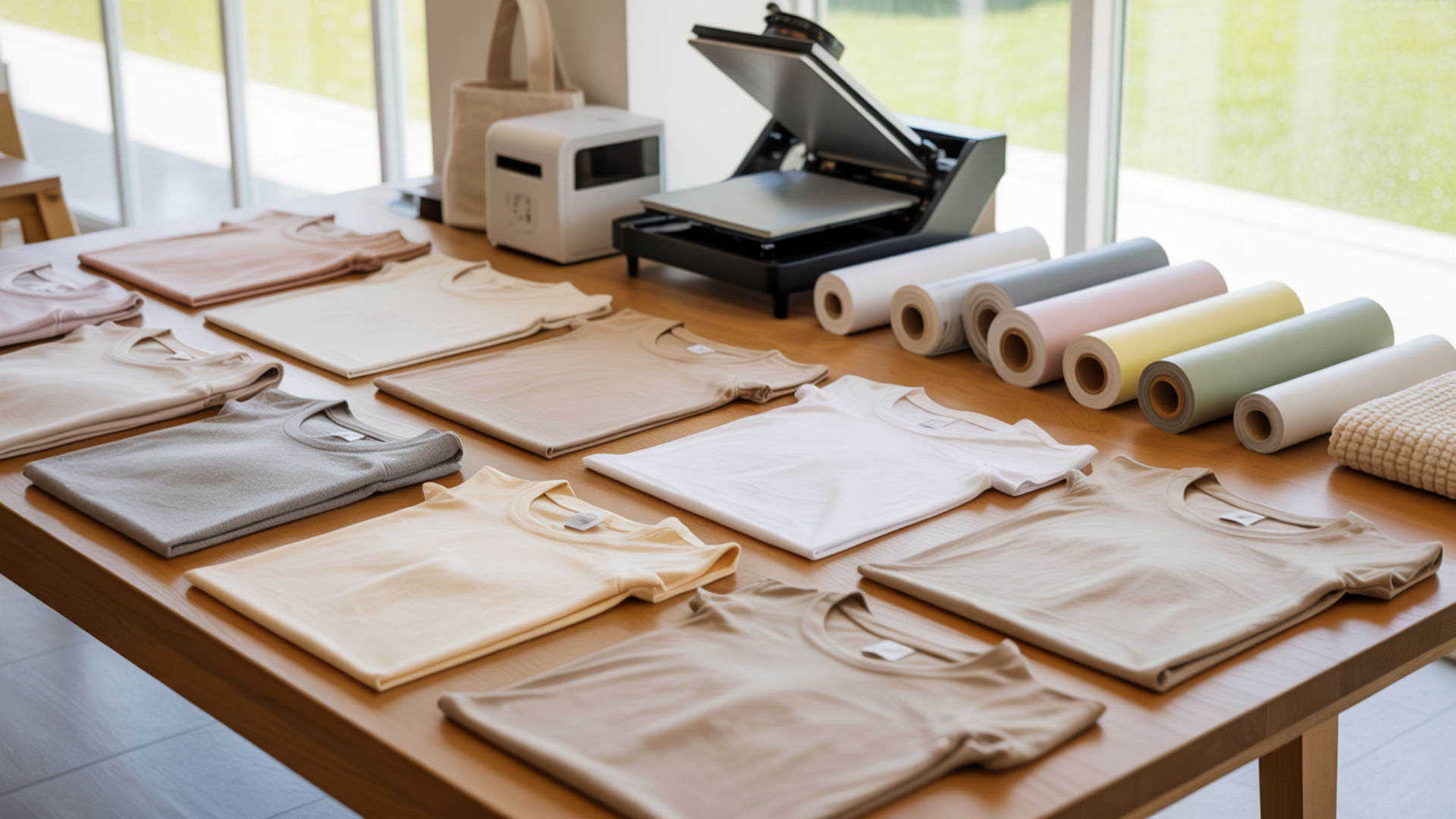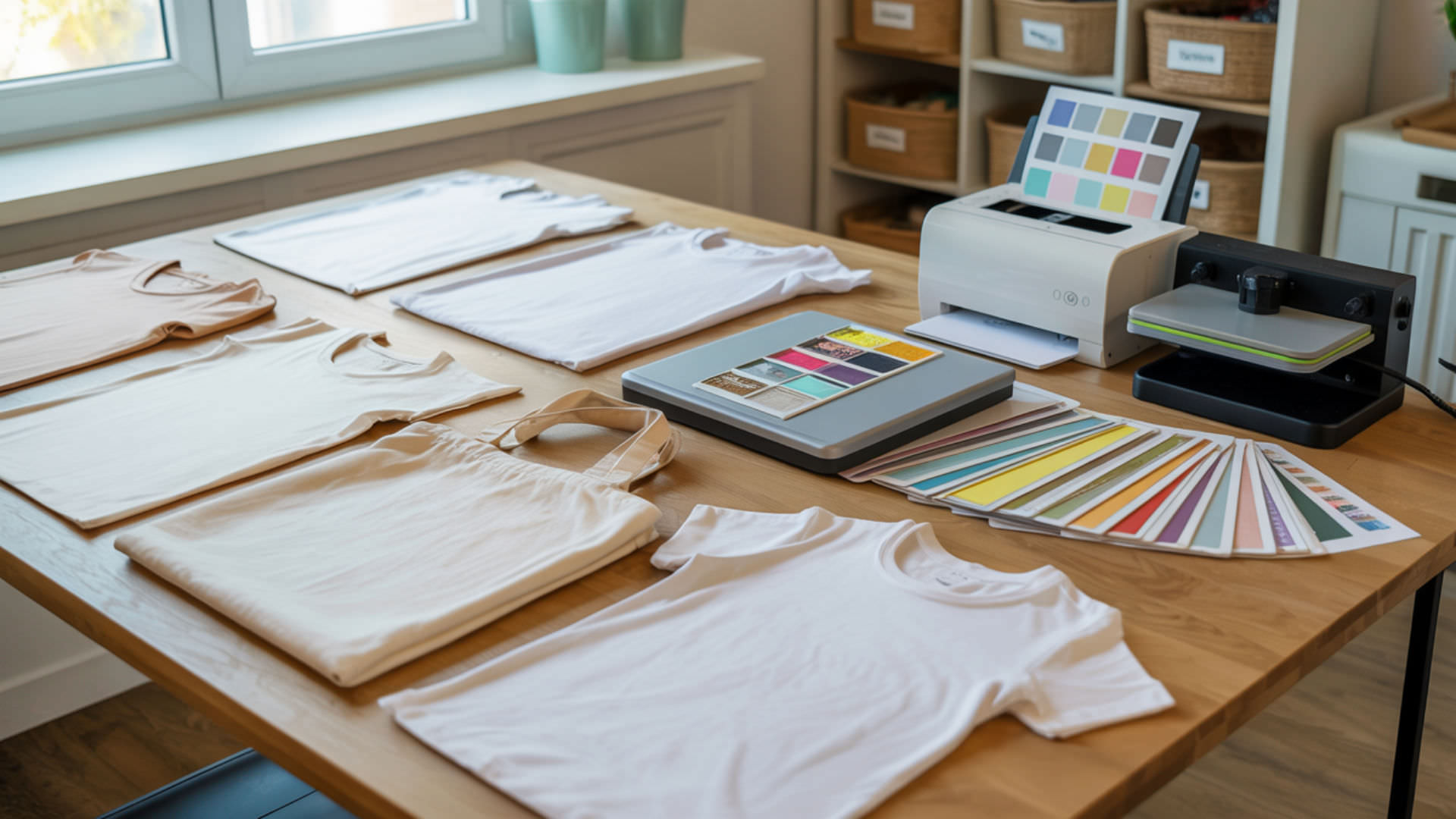Table of Contents
ToggleSo some of you sublimation enthusiasts out there are probably wondering: “Can I use sublimation ink on waterslide paper?” – If you are looking to use sublimation ink on waterslide paper for your next crafting project, the quick answer is yes, you can use sublimation ink on waterslide paper. However, there are essential considerations to keep in mind to ensure a successful transfer. In this article, we will guide you through the entire process, from preparing your design to choosing the right printer, and finally transferring your design seamlessly onto various surfaces. Let’s dive into how sublimation ink and waterslide paper can work together to bring your creative visions to life.
Key Takeaways
- Sublimation ink can be used on waterslide paper for transferring designs onto various materials, but requires a printer compatible with sublimation inks and a polyester-coated paper to ensure proper adhesion.
- It’s crucial to prepare your designs with high-resolution images and precise printing alignment, and to dry and cut designs meticulously before heat pressing for a clean transfer onto the chosen surface.
- After transferring designs with sublimation ink, it is recommended to seal the waterslide decals with a spray sealer to enhance durability and water resistance, ensuring long-lasting results.
Understanding Sublimation Ink and Waterslide Paper
Sublimation ink and waterslide paper might sound like complex scientific terms, but don’t let that intimidate you! In the realm of crafting, they are simply tools that enable you to transfer your creativity onto various materials. The magic lies in their unique properties and versatility.
Sublimation ink is a specialized ink used in digital printing, notable for its ability to transition from a solid to a gas state, bypassing the liquid phase completely. It’s typically used in conjunction with sublimation printers to create high-resolution designs. Waterslide paper, on the other hand, is a thin decal paper with a water-activated adhesive backing. It’s your go-to for customizing non-porous items like mugs and signs. Want to learn more? Yes? Keep on reading!
What is Sublimation Ink?
Sublimation ink is a game-changer in the world of digital printing. This unique ink is formulated from dye particles that are grounded and suspended in a liquid carrier without being dissolved. The real magic happens when heat is applied. The ink changes directly from a solid to a gaseous state, bypassing the liquid phase. This intriguing characteristic is known as sublimation, hence the ink’s name.
There are two main types of sublimation ink dyes: aqueous and solvent. Aqueous sublimation ink dyes are typically used for desktop and large format printers, while solvent sublimation ink dyes cater to printers with wide heads. This ink is particularly suited for printing on polyester fabrics and can even be applied to non-fabric items like ceramics, wood, and metal for decorative purposes. Make sure you understand the difference between eco solvent and sublimation ink.
The result? Vibrant, photo-quality prints that are fast drying, durable, washable, and less prone to cracking or fading.[1]
⫸ Click Here For Best Selling Sublimation Printers And Products ⫷What is Waterslide Paper?
Now, let’s turn our attention to another key player in crafting: waterslide paper. Waterslide decal paper is an ultra-thin decal paper with a water-activated adhesive backing. It comes in two versions: clear and white. The clear version is perfect for light-colored surfaces, while the white version is ideal for darker surfaces to maintain the vibrancy of printed images.
But how does it work? The process is quite simple. After printing your design on the waterslide paper, you cut out the design, soak it in water, slide off the decal from the backing paper, and apply it smoothly onto your chosen surface. The versatility of waterslide paper is truly impressive, with possible applications ranging from ceramics, glass, metal, wood, to plastic.[2]
Combining Sublimation Ink with Waterslide Paper
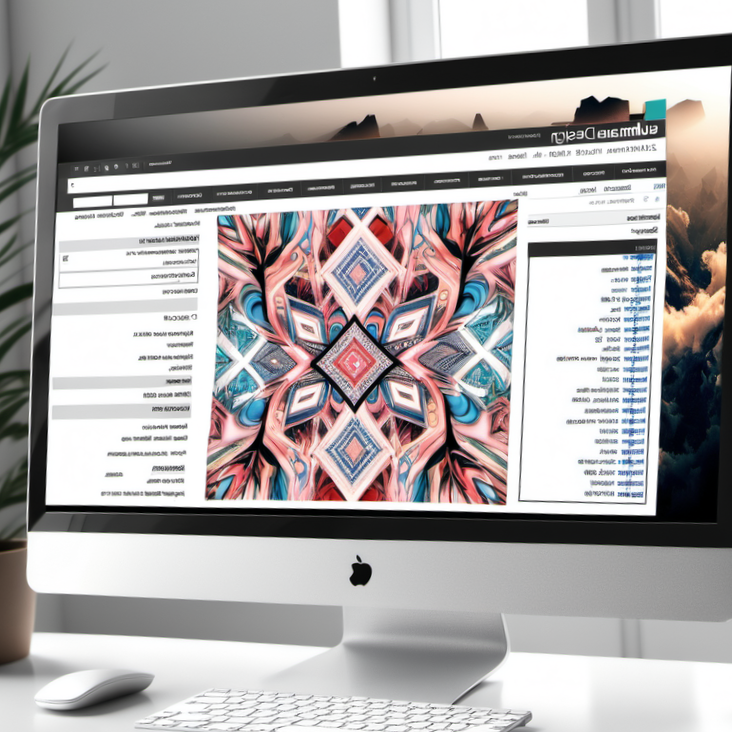
So, can you use sublimation ink on waterslide paper? The answer is a resounding yes! However, it’s crucial to ensure that your printer is compatible with sublimation inks. The process involves three major steps: printing, cutting, and heating.
First, the design is printed on the waterslide paper using a sublimation printer. Once the ink is dry, the design is carefully cut out. The final step involves using a heat press to transfer the design from the waterslide paper onto your chosen material. This simple process paves the way for infinite crafting opportunities!
Preparing Your Design
The first step in the process is preparing your design. Using high-resolution images is important for achieving a crisp and clear design transfer. Proper alignment of the design before printing is also essential to avoid any misalignments during the transfer process.
Filling the entire sheet with decals when using waterslide paper, which can be relatively pricey, is a good strategy to maximize the number of transfers from one sheet. After printing, the design should be carefully cut with scissors to enable a clean and precise transfer onto the chosen surface without any excess paper around the edges.
Printing with Sublimation Ink
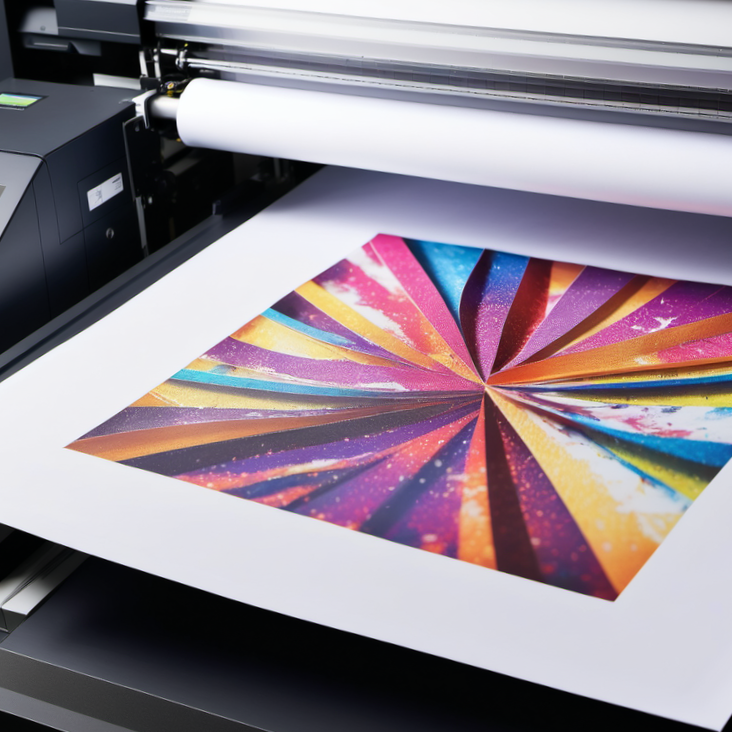
Once your design is ready, it’s time to bring it to life with sublimation ink. Ensure you print on the glossy side of the waterslide paper. After printing, allow the design to dry for a minimum of 10 minutes before proceeding to the next step.
To avoid blurry prints, ensure that the printer settings are tailored to the specific type of waterslide paper being used. Keep in mind that the quality of the output heavily relies on the quality of the input, so perfecting this step is vital!
Coating Waterslide Paper with Polyester

There’s another important aspect to consider: the coating on the waterslide paper. A polyester coating is necessary for the sublimation ink to adhere correctly to the paper. The polyester material allows the sublimation ink to bond properly, which is essential for the ink to effectively transfer onto the substrate.
Ensuring a robust transfer of sublimation ink designs to hard surfaces requires a polyester coating on the waterslide paper. So, whether you’re working on a fabric or a hard surface project, don’t overlook this vital step!
Choosing the Right Printer for Sublimation
With the basics covered, let’s talk about a critical component in the process – the printer. For successful printing on waterslide paper with sublimation ink, you’ll need a sublimation printer, specifically designed to handle such specialized tasks.
Choosing the right printer isn’t just about picking the most expensive model; it’s about finding one that suits your specific needs and budget. Let’s explore further the various types of sublimation printers and the key characteristics to consider during your purchase.
Types of Sublimation Printers
Sublimation printers come in various types, each with its unique capabilities and benefits. Purpose-built sublimation printers like the Sawgrass Virtuoso SG500 and SG1000 are specifically designed for sublimation printing, delivering high print resolution and quality.
On the other hand, some printers, such as the Epson EcoTank series, can be converted to sublimation printers, providing a cost-effective and accessible option for beginners. If you’re looking to tackle larger sublimation projects, large-format sublimation printers like the Sawgrass SG1000 and Epson SureColor F570 might be the ideal choice.
Key Features to Consider
Now that you have a basic understanding of the types of sublimation printers, what should you look for when choosing a printer? Purpose-built sublimation printers typically offer higher quality prints with better resolution compared to converted inkjet printers.
Sublimation printers must be compatible with a variety of materials, as well as specialized sublimation paper and ink. Not all inkjet printers are suitable for conversion for sublimation uses. Another critical factor to consider is cost. Remember to factor in the ongoing cost of sublimation ink and paper along with the initial cost of the printer.[3]
Transferring Your Design to Various Surfaces

Now, we get to the thrilling part – moving your design onto your selected material! Sublimation printing is a digital printing method utilized to transfer designs onto various substrates including:
- fabric
- plastic
- metal
- wood
The process of sublimation printing includes the following steps:
- Creating reverse images on heat-resistant sublimation papers.
- Applying the images to produce high-quality prints on polyester fabrics.
- Using a wide range of materials, such as polyester fabrics, wood, glass, cardboard, and metal surfaces, for sublimation printing, as long as they are polymer or polymer-coated.
For a successful print transfer from waterslide paper to the final surface, it’s necessary to seal the print with a spray sealer after using sublimation ink.
Transferring to Fabric
If you’re looking to transfer your design onto fabric, you’ll need to take a few extra steps. Start by ensuring the waterslide paper has a polyester coating to facilitate effective adherence of the sublimation ink to the fabric.
Once the design is printed onto the polyester-coated waterslide paper with a sublimation printer, it’s time to cut out the design accurately. Position the cut-out design on the t shirts fabric, ready for heat transfer. The heat press should be set to 400-410°F for 35-45 seconds with medium pressure. Pre-press the shirt for 3-5 seconds to eliminate any moisture.
After the heat transfer, carefully remove the waterslide paper and smooth out the design using rubbing alcohol to eliminate wrinkles. Let the fabric dry thoroughly before handling.
Transferring to Hard Surfaces
Transferring designs to hard surfaces like ceramic mugs, metal surfaces, and glass or ceramic tiles also requires a few special steps. Start by sizing your design appropriately for the hard surface item, typically around 2 to 3 inches tall for small items such as mugs and glasses.
After printing the design on waterslide paper with a sublimation printer, let it dry for at least 10 minutes before cutting it out precisely with scissors or a cutting machine. Clean the hard surface with rubbing alcohol before applying the decal, then submerge the decal in water for 30 to 60 seconds until it slides off the backing paper and apply it to the surface, smoothing out bubbles or wrinkles.
Allow the decal to dry for sufficient time then bake it according to the specific waterslide paper instructions, typically around 230 degrees F for 10-15 minutes. Leave the item to sit for 3 days for the decal to fully set.
Troubleshooting Common Issues
Like any craft, working with sublimation ink and waterslide paper can come with its share of challenges. But don’t worry; most issues are easily resolvable with a little know-how. If you encounter any problems, don’t hesitate to seek advice from experts like Sublistar’s specialists who can provide valuable guidance.
Customer support is also a valuable resource for resolving color issues and setup problems, with brands like Sawgrass known for their helpful service. And remember, sometimes the solution is as simple as using a paintbrush to push out any bubbles or wrinkles in the waterslide decal to achieve a smooth finish.
Peeling or Fading Designs
Peeling or fading designs can be a common issue when working with waterslide decals. To prevent this, make sure that:
- The ink is fully dry before application
- The surface is clean and free of any oils or debris
- The decal is applied smoothly and without any air bubbles
- The decal is sealed with a clear coat or varnish for added protection
Waterslide decals can last for many years when cared for properly, though the adhesive may weaken after 3-5 years due to normal wear and tear.
Although the adhesive on waterslide paper is relatively strong, waterslide decals may require a sealant to offer additional protection and enhance durability. It’s a small step that can significantly extend the life of your designs, so don’t skip it!
Uneven or Blurry Prints
Uneven or blurry prints can be another common issue when working with sublimation ink and waterslide paper. Luckily, there are a few easy fixes. First, ensure that you’re using high-resolution images. This will ensure your designs are crisp and clear when transferred.
Next, pay close attention to the alignment of your design before printing. Proper alignment can help prevent any misalignments that might occur during the transfer process. With these tips in mind, you’ll be on your way to creating beautiful, clear designs in no time!
Tips for Successful Sublimation Ink and Waterslide Paper Projects
Ready to start your journey into the world of sublimation ink and waterslide paper projects? Here are a few tips to set you on the path to success. To prevent air bubbles when applying waterslide decals, start at one edge and slowly smooth the decal onto the clean surface. Employ a squeegee or rubber scraper to help eliminate any trapped air bubbles beneath the waterslide decal during the application.
Select the correct clear sealant to enhance the water resistance and longevity of your waterslide decals, as performance can vary between brands. And remember, practice makes perfect. Don’t get discouraged if your first few attempts don’t turn out exactly as you’d hoped. Keep trying, and you’ll soon be creating stunning sublimation ink and waterslide paper projects!
Proper Heat Press Technique
Mastering the heat press is a key component of successful sublimation projects. For materials such as Unisub products and hardboard, it’s crucial to remove the transfer paper right after pressing to ensure clear and precise image transfer.
When sublimating onto textured surfaces, the paper should only be removed after the substrate has cooled down completely to avoid image distortion. To prevent ghosting when transferring sublimation ink onto polyester fabric, a tack spray can be used on the transfer, which will hold the paper in place during the pressing process.
Remember, precision is key in achieving a perfect transfer!
Ensuring Water Resistance and Durability
Finally, yet importantly, let’s discuss how to ensure water resistance and durability. Sublimation inks are waterproof and offer resistance to UV, scratching, or abrasion, enhancing the longevity of designs.
Before applying the decal, seal the printed waterslide paper with three coats of acrylic sealer, each layer sprayed from different directions and allowing 30 minutes of drying time between coats for effective water resistance.
After decal application, a clear acrylic spray or sealant can be applied to the surface to prevent peeling and protect the design from fading, ensuring lasting water resistance. To expedite the curing time of the sealant, a hairdryer can be used cautiously at a safe distance to avoid damage to the waterslide paper.
Summary
We’ve covered a lot of ground in this guide, from understanding sublimation ink and waterslide paper to choosing the right printer, transferring designs, and troubleshooting common issues. The world of crafting with sublimation ink and waterslide paper is rich with possibilities, limited only by your creativity. So, don’t wait any longer. Grab your printers and papers, and let’s create something amazing!
Frequently Asked Questions
Can you use waterslide paper in a sublimation printer?
Yes, you can use waterslide paper in a sublimation printer to enhance toner fusion and printability.
What kind of ink do you use for waterslide paper?
You can use either pigment or dye inks with waterslide paper for your decal printing. Both types of ink work effectively for this purpose.
Can I use sublimation ink on printable sticker paper?
Yes, you can use sublimation ink on printable sticker paper as long as you use the right kind of sticker paper. Ensure you use the appropriate paper for the best results.
What is sublimation ink?
Sublimation ink is a specialized ink used in digital printing to create high-resolution designs by transitioning from a solid to a gas state, bypassing the liquid phase. It’s commonly used for printing on various materials.
What is waterslide paper?
Waterslide paper is an ultra-thin decal paper with a water-activated adhesive backing, used to customize non-porous items like mugs and signs. It’s a great way to add personalized designs to various surfaces.
References
- Booth, H. V. (2023, June 5). Which Ink Reigns Supreme? Inkjet vs. Dye-Sublimation for Large Format Printing. HP Large Format Printers & Plotters PH. https://largeformat.hp.com/ph/blog/which-ink-reigns-supreme-inkjet-vs-dye-sublimation-for-large-format-printing
- Wikipedia contributors. (2022, August 21). Water slide decal. Wikipedia. https://en.wikipedia.org/wiki/Water_slide_decal
- Yu, J. (2012, October 4). How to buy a printer. CNET. https://www.cnet.com/tech/computing/printer-buying-guide/
tinlizzyscantina.com/catering-events
⫸ Click Here For Best Selling Sublimation Printers And Products ⫷



